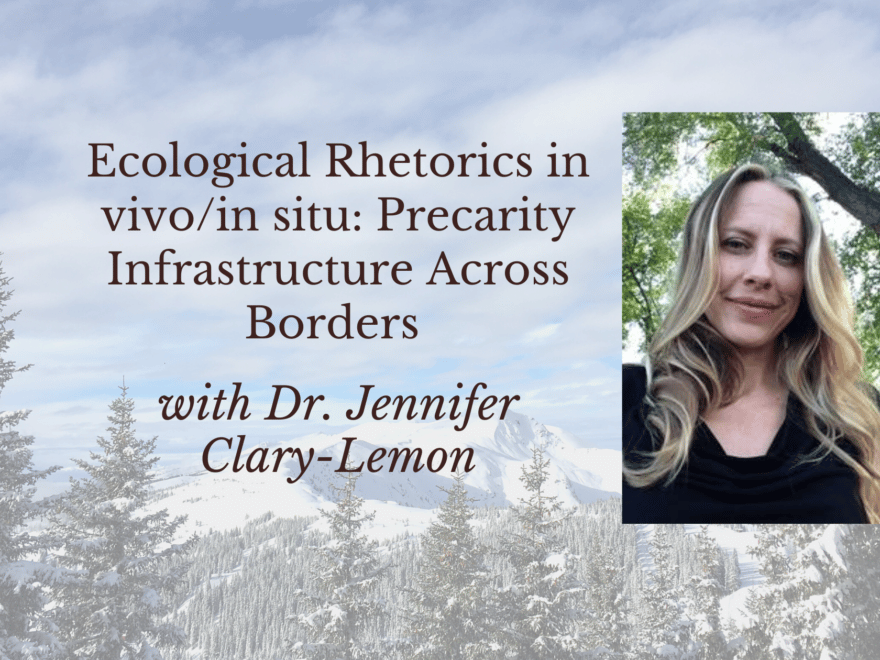The WRD Writing & Rhetoric Across Borders Series is back in person! On Wednesday, October 5 from 4:30 to 6 p.m. in McGowan South 105, gather together with Dr. Jennifer Clary-Lemon to learn about how built objects affect the things around them. If you have ever gotten into a serious debate about what is and is not considered rhetoric–this talk is for you!
As always, the event is free to attend!
Dr. Clary-Lemon is an associate professor at the University of Waterloo in Ontario, Canada. She has a BA in Political Science from the University of Arizona, an MA in English (or Writing, Rhetoric, and Discourse) from DePaul, and a Ph.D. in the same from Arizona State University. Formerly she taught for 12 years at the University of Winnipeg where she also worked as the director of the university’s writing center.
Although she is a rhetorical scholar, Dr. Clary-Lemon notes in her staff biography that she identifies foremost as a writing teacher. She writes, “My interest in supporting writing as a core culture of a university has emerged from over 20 years of university teaching. It has been a large part of my own teaching philosophy that location—both geographic and personal—affects rhetorical choices and agency.”
Some of her previously published research includes: Nestwork: New Material Rhetorics for Percarious Species, Decolonial Conversations in Posthuman and New Material Rhetorics, Try This: Research Methods for Writers and Gifts, Ancestors, Relations: Notes Toward an Indigenous New Materialism, among others.
Her personal research passions are what brings her back to DePaul to engage with how human and nonhuman beings impact one another. And, if they are able to persuade the other, how those interactions are impacted by the built world around them. Hence the phraseology “vivo/in situ” which translates to “in living bodies and on-site.”
Specifically, the talk centers on Dr. Clary-Lemon examining two rhetorical ecologies guided by migratory nonhumans and their disappearance across two country borders. The first, in the case of the barn and bank swallow, examines artificial swallow gazebos built in Ontario, Canada, and Paris, France. The second examines the case of artificial burrows built for the Western burrowing owl in Phoenix, Arizona, and Manitoba, Canada. Such examinations allow rhetorical scholars to explore relations that function at the border between nature, cultural tension, and human loss. Too, they speak to the inability of human borders and human infrastructure to communicate clearly to nonhuman others, opening up possibilities to shape conservation action in the future.
Dr. Clary-Lemon’s study of these birds is a clear delineation of her not-so-secret dream of being a biologist. Here is one way in which we can see a love of rhetoric marrying another interest in a fascinating way.
